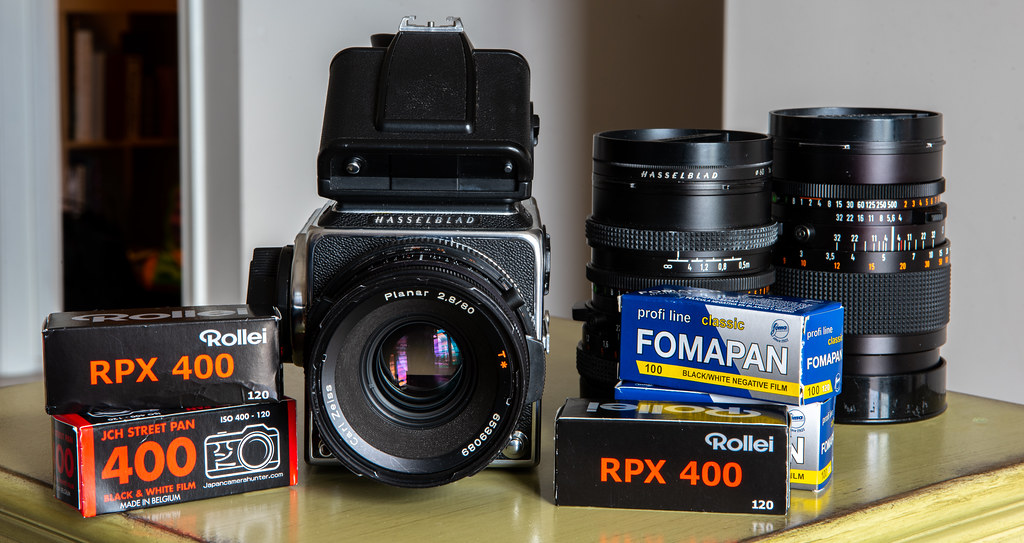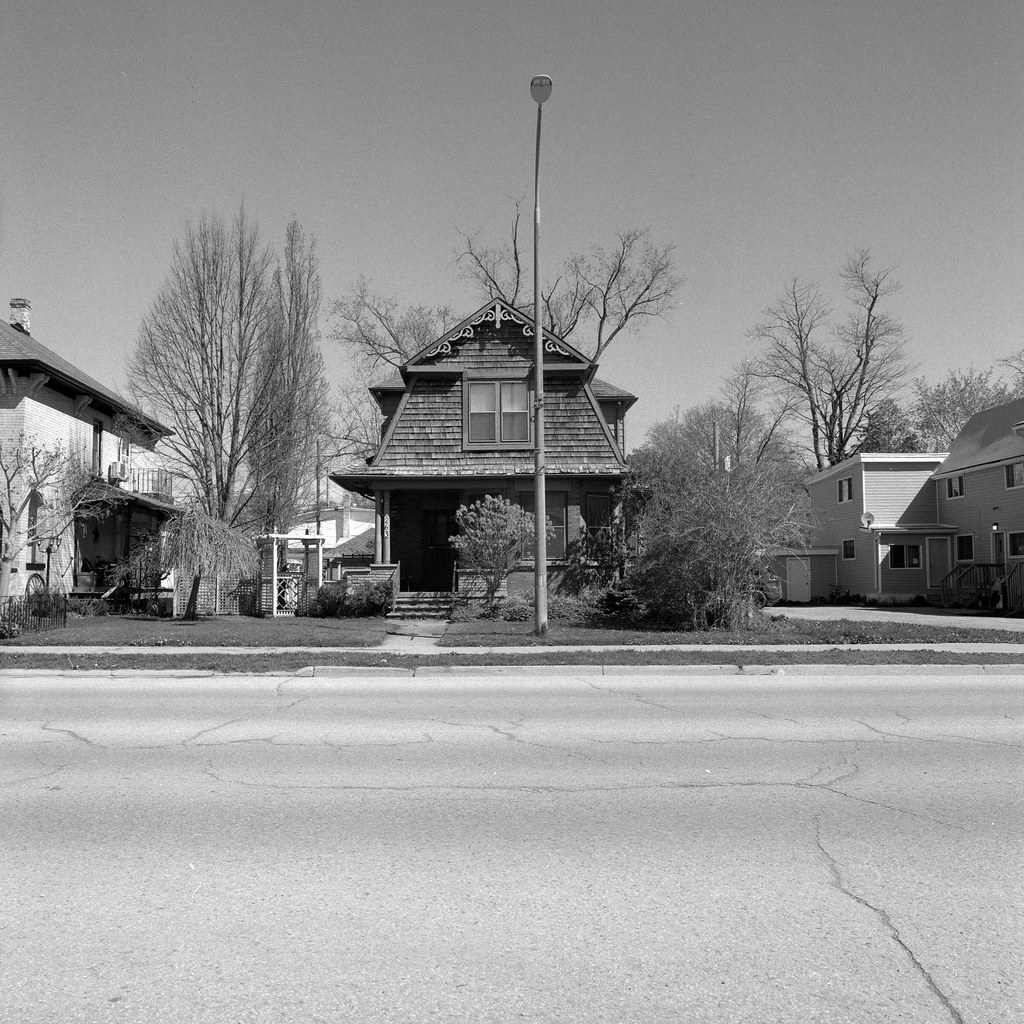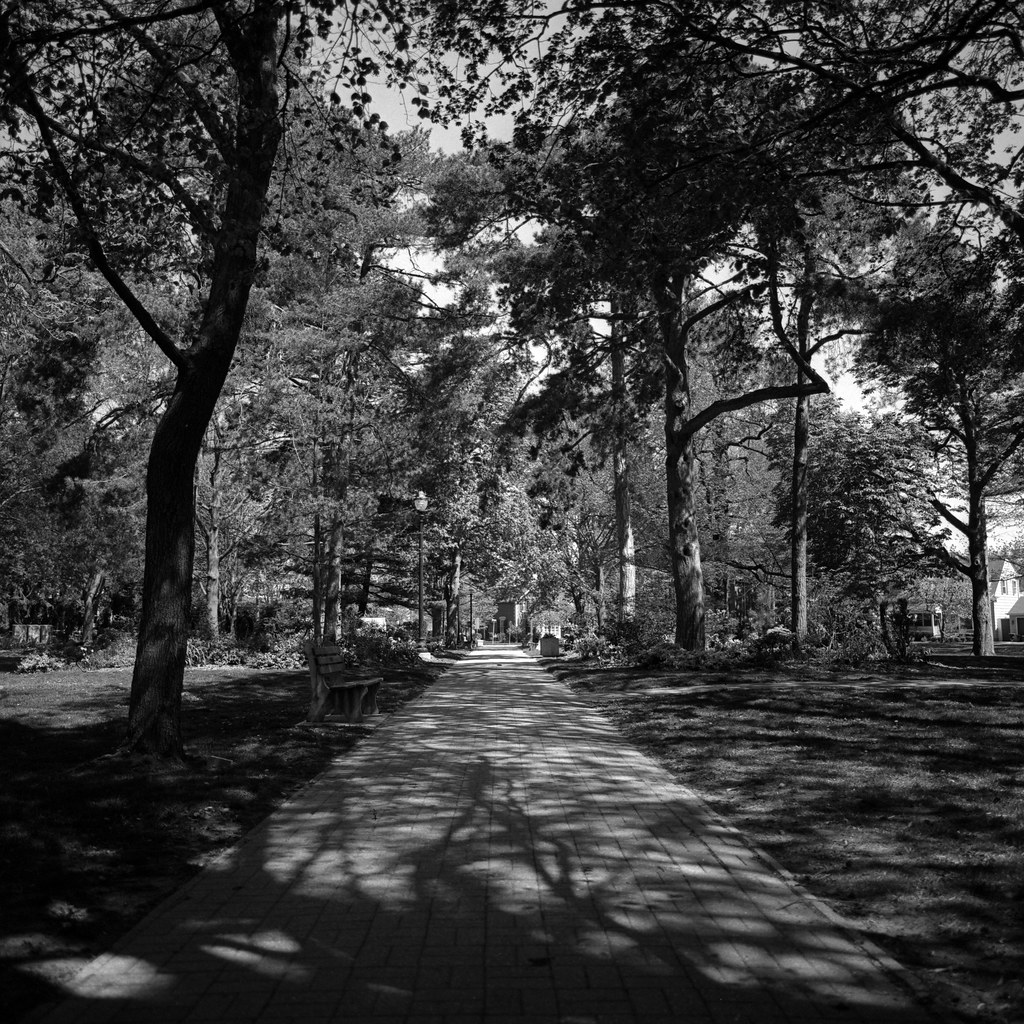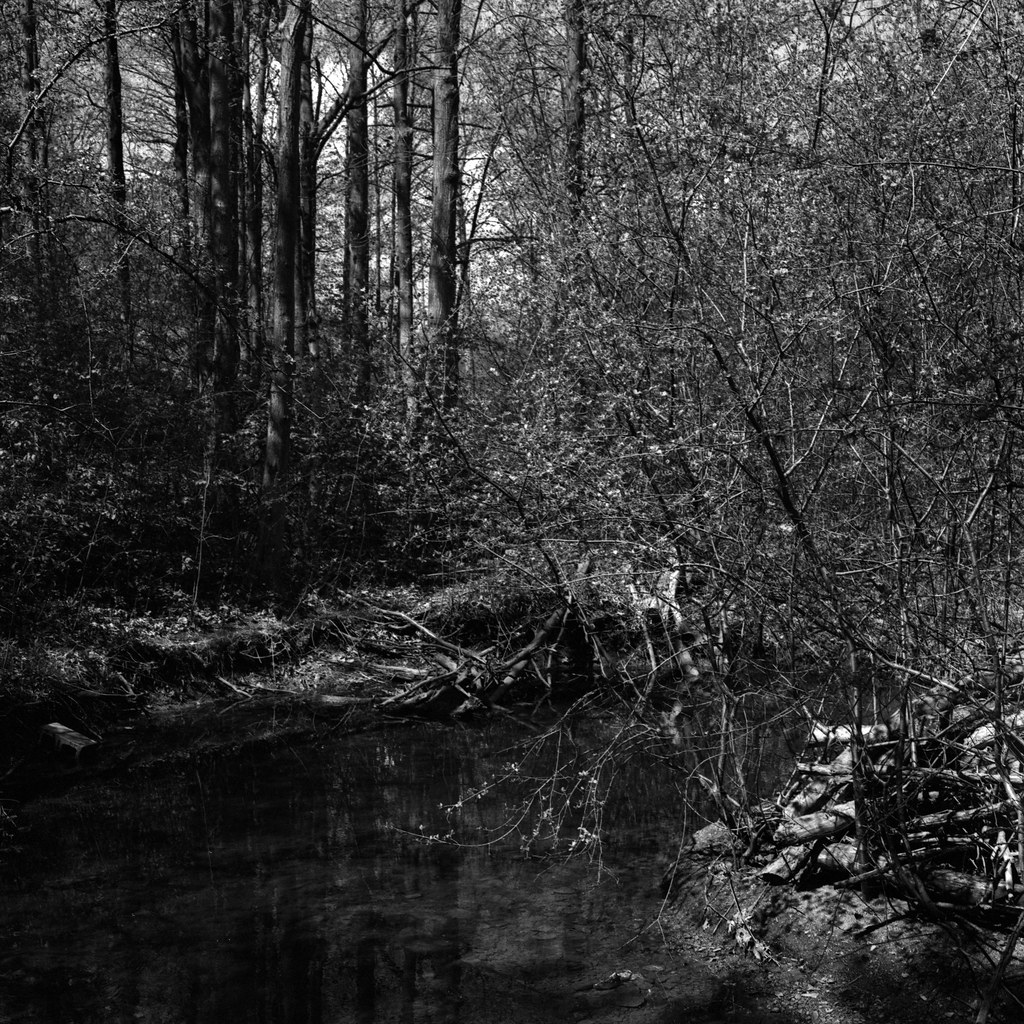The Hasselblad V-System, one that has achieved legendary status within the photographic community. I’m surprised that I actually own the original 500c, and while I don’t use it as much as I used to, it remains a popular tool in my kit. But what about going with something a little newer? The original 500c saw its initial release in 1957 and certainly has flaws, but as a system camera, it started something. While the 503cx isn’t the newest horse in the stable, it adds a pile of features that makes up a greatly improved camera system but allows the use of the older accessories. And while I have a couple of older lenses and magazines for the back, my good friend James Lee was more than happy to loan out almost his entire kit for the 503cx to review. And what a camera it is, familiar yet improved, and the same joy to use as the 500c.

Camera Specifications
Make: Hasselblad
Model: 503c/x
Type: Single Lens Reflex
Format: Multiple, Back Dependent (120/220 Standard, 6×6)
Lens: Interchangable, Hasselblad V-Mount
Shutter: Compur Leaf Shutter, 1″ – 1/500″ + Bulb
Year of Manufacture: 1989 – 1994
Background
Hasselblad as a camera company can trace back to a chance meeting between the son of Franz Victor Hasselblad, Arvid Vikor and George Eastman during Arvid’s 1885 honeymoon in London, England. Arvid’s father operated a trading company in Sweeden that dated back to 1841 and sold household goods. Arvid and George reached an agreement to allow the F.W. Hasselblad & Co company to be the sole distributor of Eastman’s photographic supplies. Fritz saw the photographic supplies more as a means to feed Arvid’s love of photography, more than a means for profit. Yet by 1908 the photographic division began profitable enough to create Hasselblad Fotografisk AG. Arvid’s son Karl wanted to further the company’s photographic prowess and sent his son, Victor, to study under the great photographic companies. In 1924 Victor went to Dresden, Germany, the world’s centre of the photographic industry. Karl would work in factories, shops, and labs. During his time he became a noted photographer himself, and in 1926 he moved to the United States. George Eastman would take the great-grandson of his old friend under his wing as a protege, at least until Eastman’s death by suicide in 1934. Victor, encouraged by all his learned, began to publish his work and returned to his native Sweeden in 1937 and opened up his own Photographic business, selling, processing, print, and building cameras. Victor, who had been tinkering with the idea of building his camera, got a boost when the Sweedish airforce presented him with an ariel camera from a downed Luftwaffe aircraft. Victor would produce the HK-7 in 1941, which would become a successful camera used by the Sweedish airforce. The death of his father saw Victor appointed as head of Hasselblad Fotografisk in 1943. The move gave Victor access to a wider range of skills, including workers who produced timepieces and watches. He turned the entire company towards the production of an improved surveillance camera, the SKa-4. By the end of the war, Hasselblad had produced some 342 cameras. With the end of the war, Victor turned everything he learned with the HK-7 and SKa-4 to produce a high-quality civilian camera. The design of the camera came from the SKa-4 and refined by noted SAAB designer Siten Sason. The war and partition of Europe made acquiring German optics had Victor turn to the United States, and Kodak gladly supplied their high-quality Ektar lenses. In 1948 the Hasselblad 1600F was reviled. The early model 1600F proved over-engineered and incredibly complex, which gave a bit of a poor reputation in reliability. A second version released in 1950 fixed some issues, but again suffered several of the same problems. Most of these were focused on the shutter, which required constant attention to maintain shutter speed accuracy. Hasselblad returned to the drawing board and in 1953 released the 1000F, it retained the focal plane shutter like the 1600F but proved far simpler with the internal workings. It also replaced the Kodak optics with Carl Zeiss optics, which helped lower the cost. A timely and favourable review by the American magazine, Modern Photography, put the 1000F on a pillar and launched Hasselblad into the limelight and made them a household name. But they weren’t done yet, to further improve on the reliability of the Hasselblad and decided to take a massive risk. The risk came in the form of the Hasselblad 500c released in 1957. Hasselblad decided to replace the focal plane shutter with a lens mounted Compur shutter, the risk was that leaf shutter cameras were often associated with a consumer camera, not professional. But Hasselblad continued to use high-quality Zeiss optics, and introduce the idea of a system camera. Users could swap out the lens, finder, and even the film back. And the film backs can be swapped out mid-roll thanks to a darkslide. Professionals flocked to the new camera that proved a huge winner and set a new benchmark for a professional camera. The 500c caught the eye of NASA, the American space program, who set up a contract to put Hasselblad cameras in space. The NASA contract the 500c became the base for the Hasselblad 500EL (and Electronic 500c) in 1965. Production of the 500c ended in 1970 with the introduction of the improved 500c/m. But the 500c/m could still use all the old backs, lenses, and finders, production of the c/m continued until 1994. During this time, Hasselblad also released the 503cx in 1988. While primarily the same camera as the c/m, the 503cx included several improvements. It came standard with an improved Acute Matte focusing screen and Palpas coating to cut back any internal reflections. Most important is an internal TTL flash meter. Production of the 503cx continued until 1994, but the logical replacement, the 503cw did not see release until 1997 and added an improved Acute Matte D screen and a gliding mirror system for improved use of telephoto lenses.




Impressions
What surprises me the most about the 503cx is that it is no heavier or no lighter than my 500c but it certainly performs better than the older model (no surprise). In a common setup, that being the 80mm f/2.8, A12 back, and a waist-level finder, it is a surprisingly compact camera to carry around and is well balanced and doesn’t weigh you down too much. The one thing I do recommend is a good strap. The only that I borrowed came with a beautiful hand-crafted leather strap from my good friend Mark Rossi of Due North Leather. Despite being similar to the older model, the 503cx does have some different controls, namely an ASA setting wheel to help with the internal flash TTL meter. If you’re familiar with the 500 series, then using the 503cx will be like riding a bicycle, it might take a bit if you’re unfamiliar, but once you got it, you can easily use any camera in the system. The one thing that I did like was on the modern lenses, it is far easier to adjust the exposure settings since they are no longer coupled (like they are on my old chrome units) and there are leavers to help make the settings and differences in textures to help determine with dial does what setting. Probably the best addition is the viewfinder, the Acute Matte screen is bright and clean and makes focusing without the magnifier easy, but when doing close work the magnifier helps out a great deal. Focusing the lenses is smooth and the winder is equally smooth and the shutter, mirror, and doors make a delightful clunk when you take a photo.




Experiences
If you have used any of the 500-Series, or V-System then working with the 503cx will be both familiar and a little different. If you look at a Hasselblad the first time you probably will think that the camera is a bear to use, and you’d be right, they aren’t the best when it comes to economics. But remember that the cameras were designed on a former surveillance camera designed to be mounted in an aeroplane. Yet, being a user of a 500c, the 503cx proved an easy experience. But there are a couple of things that add to the Hasselblad experience with the newer body. The first is the screen, the 503cx comes with not only the ability to change out focusing screens but having the stock Acute Matte focusing screen, which is big, bright, and makes focusing with or without the magnifier. And that goes for any lens, I’ve had the chance to use the 50/4, 80/2.8, and 150/4 and the screen remain bright and easy to use. And using the waist level finder is probably the most natural means to use the 503cx (or any V-System camera). Although I also had a chance to use the camera with a PME finder, not the older version (45° Metered Prism) but the PME finder. And it actually works well both mounted on a tripod but also handheld, although a handgrip would make life a little easier. The one thing that should be noted is that the PME finder is metered but displays in EV (Exposure Value) which is handy for older C lenses, which include the EV on the lens body, newer lenses lack. The one strange Despite everything, the camera is a joy to use, and surprisingly compact when properly equipped.




Optics
One of the biggest draws to the 500-Series from Hasselblad is the optics. And if you look at Hasselblad overall they have always used excellent optics, from the early focal plane shutter models using Kodak Ektar lenses to the current batch of Carl Zeiss optics. And the best part is that you can use any V-Mount lens, although for best compatibility you will want to stick with C or CF lenses. While a T* coating is a nice addition, it does help a lot with flare issues that the lenses suffer from, especially the Planars, but a good hood will help reduce the flare. I tried to be careful but did catch some flare a couple of times with the 50mm f/4 Distagon. The 503cx looks excellent with the all-black lenses, you will pay a bit more for the newer optics, the Chrome lenses (C) are older but excellent as well and if you are only using a leaf shutter, then you don’t have to worry about focal plane support. The only thing to worry about is ensuring that you mount and dismount while the shutters are cocked to avoid damaging the body and the lens.




Lowdown
While the 503cx isn’t a camera that you need, if you are looking for an update from an older model, say a 500c then a 503cx might be the camera you’re looking for. And the best part is that if you’re already invested in the 500-series all you’re going to be looking for is the camera body proper. However, they are not cheap on the used market. The bodies on their own will run between 1,500 and 2,100 dollars, and between 3,500 to 5,000 for a complete kit (lens, back, body, and finder). Surprisingly, being a newer unit, they are less expensive than 500cm units. The one thing to watch out for is to ensure the back is for 120 film, while you can use 120 film in a back designed for 220 film, you will lose one frame and start getting frame spacing issues. These backs are called A12 or 12 as opposed to A24 or 24. But these are well made and easily repaired and maintained by trained technicians. The funny part about Hasselblads is that they do carry their value well, even the older models and given the late 20th Century age of the 503cx they will carry more. If you’re not into film or want to use these cameras for digital photography, you can, the Hasselblad CFV II 50C offers up a 50-megapixel CMOS sensor. And it also works with older units. As I started, Hasselblads aren’t always cameras that you need, they are cameras that you want. But the one thing they can deliver is excellent image quality and a strange experience.
Further Reading
Don’t just take my word on the 503cx, you can check out the reviews by other awesome camera reviewers!
35mmc – 5 Frames with the Hasselblad 503cx
5050 Travelog – Hasselblad 503cx Review
Munkeat Photography – Hasselblad 500cm/503cx Review
Film Advance – The Hasselblad Travel Camera
